Multibrot Set (#168)
The Mandelbrot Set is typically defined as the set of all numbers for which — with
,
and
— the limit
converges. Visualizations of this standard Mandelbrot Set can be seen in three of my posts (Mandelbrot Set, Mandelbrot Set Miscalculations and Mandelbrot Set II).
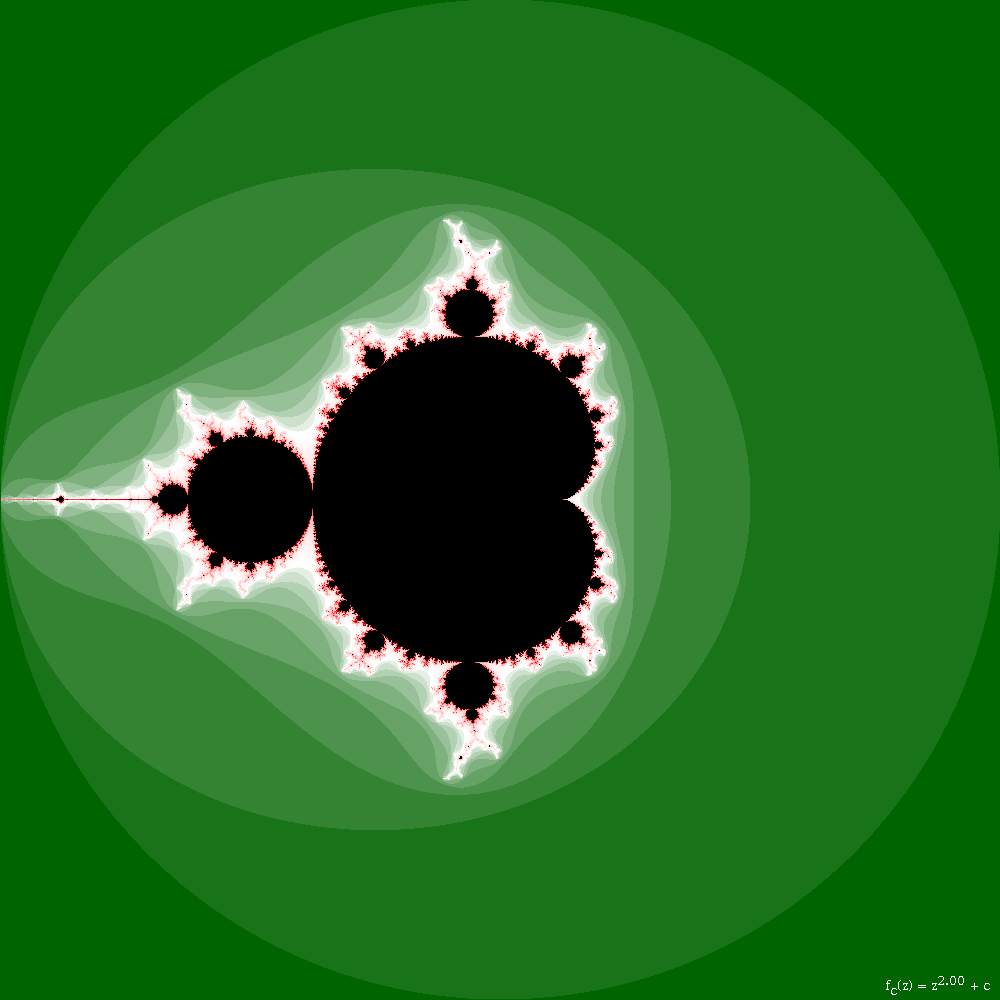
However, one can extend the fractal’s definition beyond only having the exponent 2 in the function to be with
¹. The third post I mentioned actually has some generalization as it allows for
, although the approach used cannot be extended to real or even rational numbers.
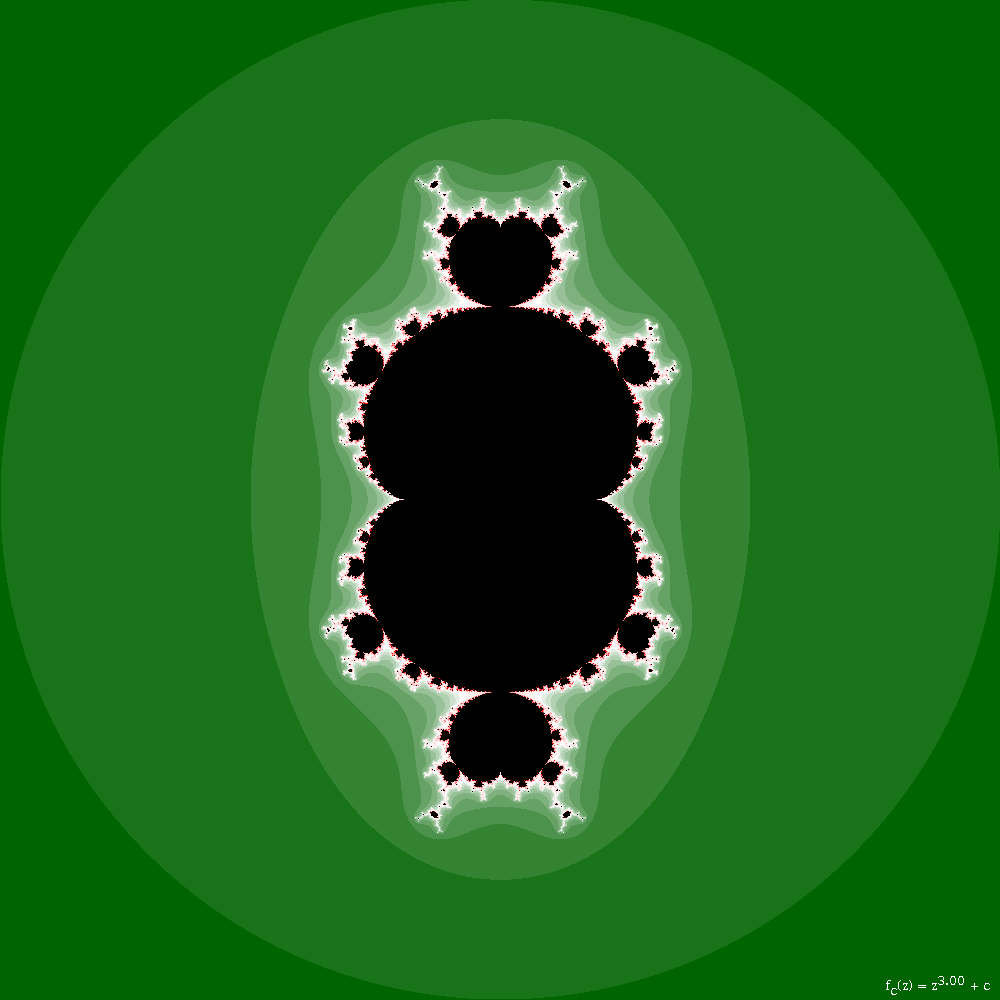
The method I used in the aforementioned post consists of manually expanding for each 𝑛. The polynomial
, for example, would be expanded to
.
This method is not only tedious, error-prone and has to be done for every exponent (of which there are many), it also only works for whole-number exponents. To visualize real Multibrots, I had to come up with an algorithm for complex number exponentiation.
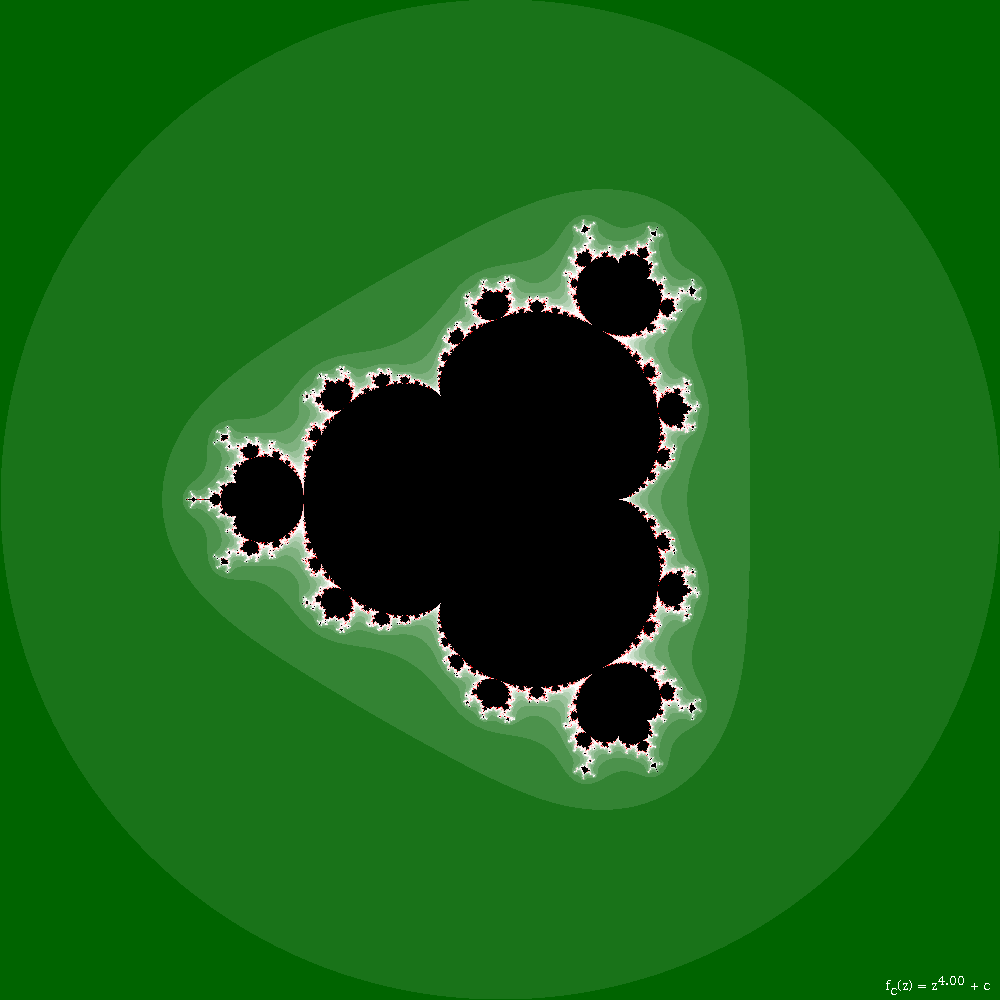
Luckily enough, there are two main ways to represent a complex number, Cartesian form and polar form
. Converting from Cartesian to polar form is simply done by finding the number’s vector’s magnitude
and its angle to the 𝑥-axis
. (The function
is used in favor of
to avoid having to divide by zero. View this Wikipedia article for more on the function and its definition.)
Once having converted the number to polar form, exponentiation becomes easy, as
With the exponentiated in polar form, it can be converted back in Cartesian form with
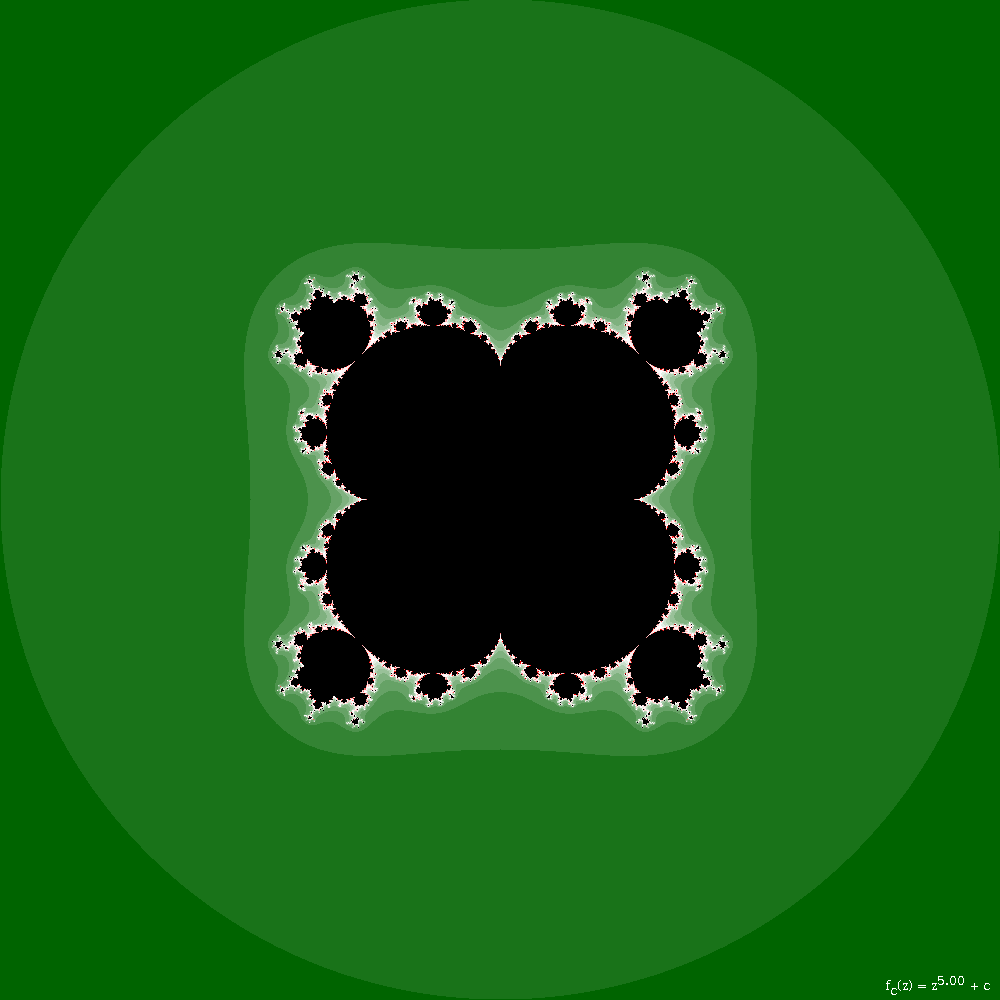
Using this method, converting the complex number to perform exponentiation, I wrote a Java program which visualizes the Multibrot for a given range of exponents and a number of frames.
Additionally, I added a new strategy for coloring the Multibrot Set, which consists of choosing a few anchor colors and then linearly interpolating the red, green and blue values. The resulting images have a reproducible (in contrast to randomly choosing colors) and more interesting (in contrast to only varying brightness) look.
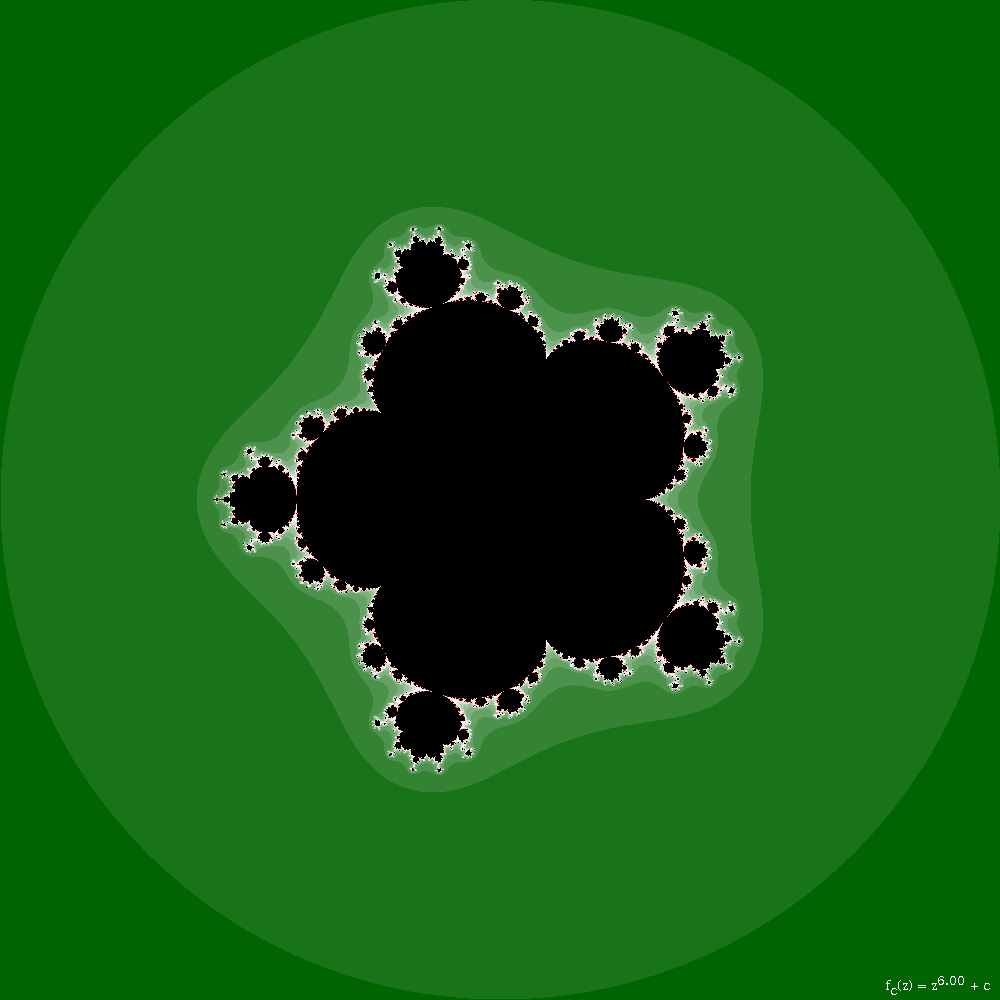
The family of Multibrot Sets can also be visualized as an animation, showing the fractal with an increasing exponent. The animated gif shown below was created using ImageMagick’s convert -delay <ms> *.png multibrot.gif command to stitch together the various .png files the Java application creates. To speed up the rendering, a separate thread is created for each frame, often resulting in 100% CPU-usage. (Be aware of this should you render your own Multibrot Sets!)
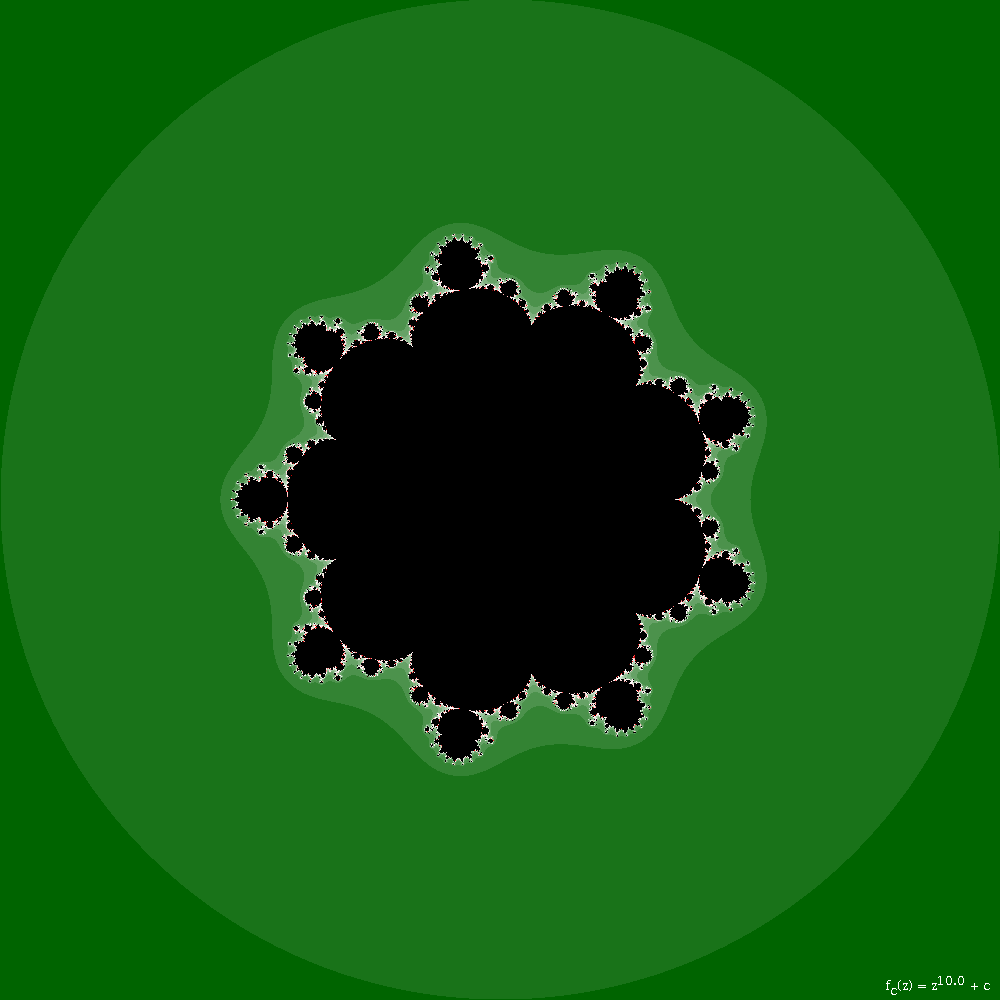
To use the program on your own, either copy the source code listed below or download the .java file. The sections to change parameters or the color palette are clearly highlighted using block comments (simply search for /*).
To compile and execute the Java application, run (on Linux or MacOS) the command javac multibrot.java; java -Xmx4096m multibrot in the source code’s directory (-Xmx4096m tag optional, though for many frames at high quality it may be necessary as it allows Java² to use more memory).
If you are a sole Windows user, I recommend installing the Windows 10 Bash Shell.

Source code: multibrot.java
| [1] | [2020-07-29] Admittedly, not the best of names for a generic exponent. |
| [2] | [2020-07-29] More precisely, the JVM. |
- pingback from #194